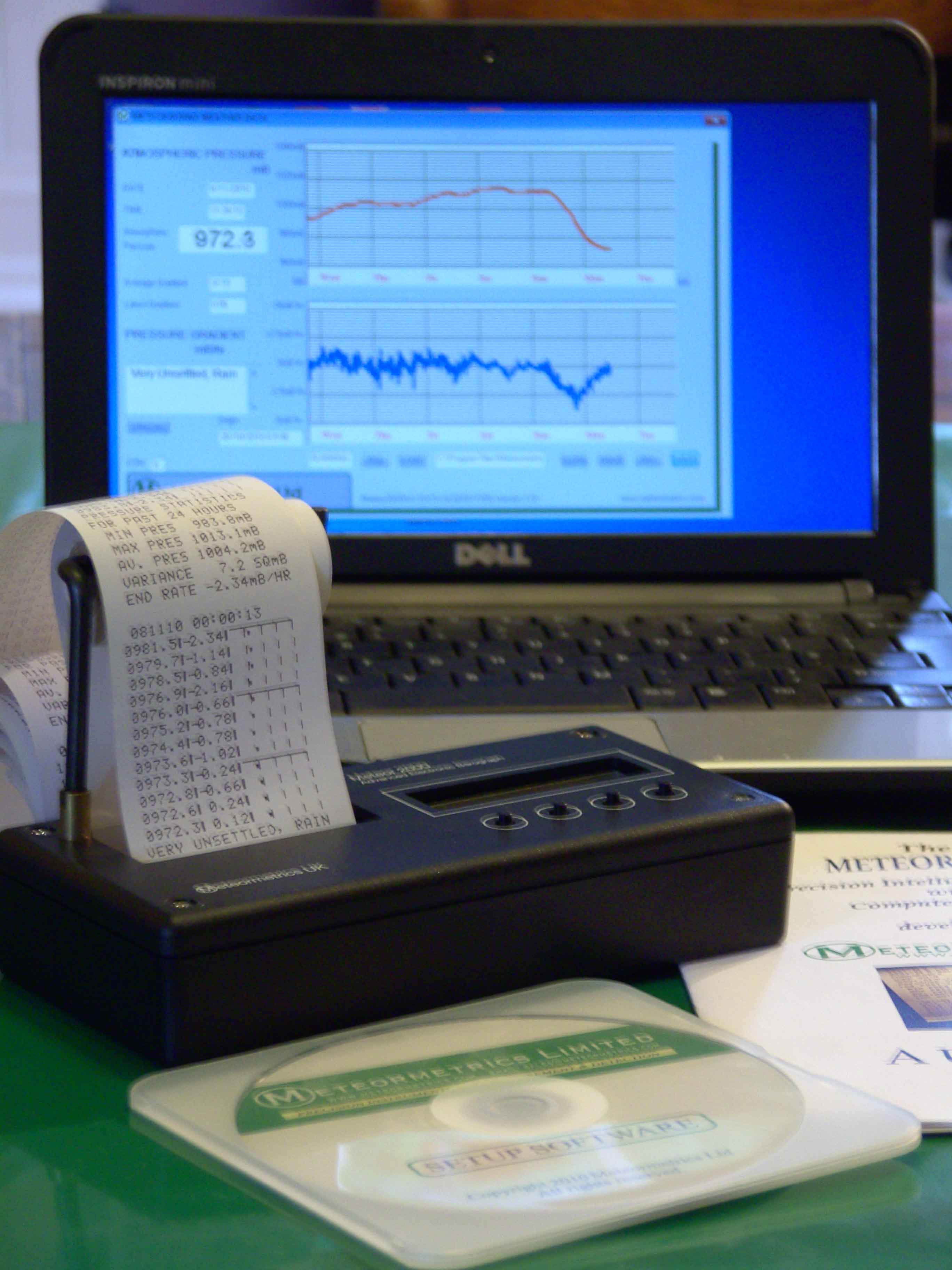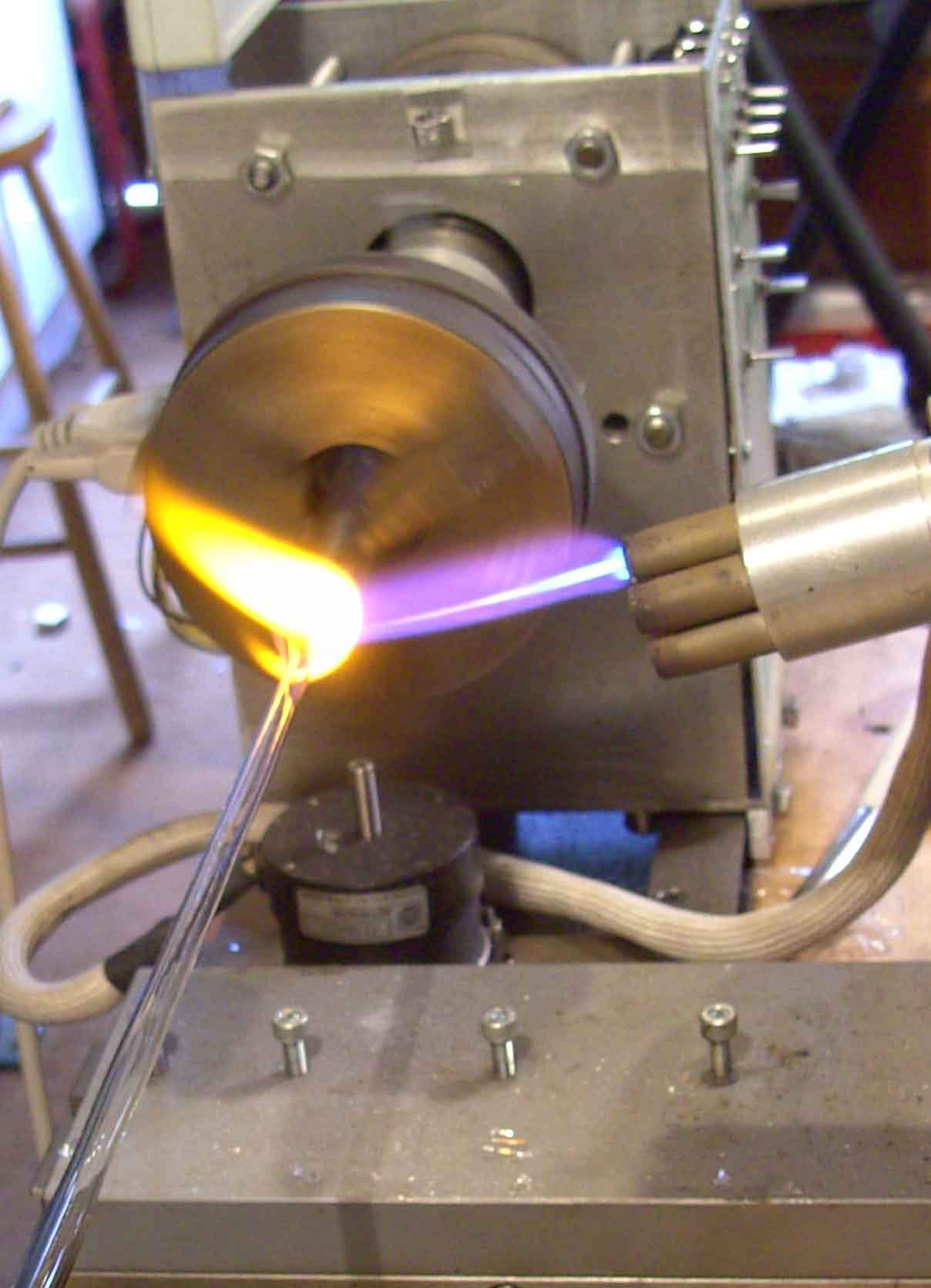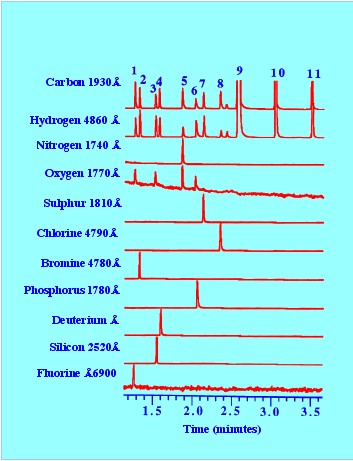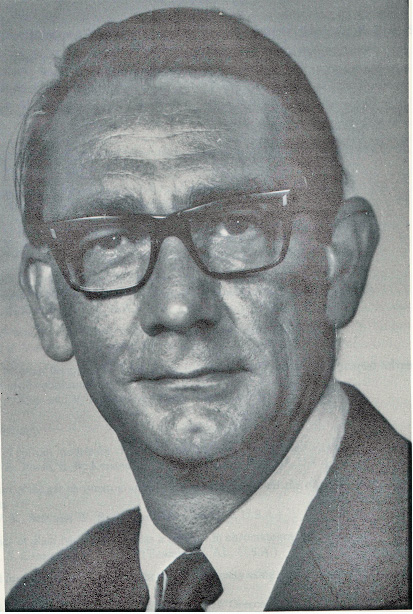ANALYTICAL SPECTROSCOPY
by Raymond P. W. Scott
D.Sc., F.R.S.C., C.Chem., C.Sci. F.A.I.C, F.C.S.
Essential Information for the Analytical Chemist

Specialising in custom-designed, precision scientific instruments, built, programmed and calibrated
to the most exacting standards. The range includes precision dataloging barographs,
with built-in statistical analysis, Barographic Transient Event Recorders
and computer-interfaced detectors and sensors
for environmental monitoring & process control.

A site dedicated to scientific techniques, experimental methods, &
investigative tools for the inventor, researcher
and laboratory pioneer. Articles on glassblowing, electronics, metalcasting, magnetic
measurements with new material added continually. Check it out!
www.drkfs.net
Probably
the most effective way to illustrate the versatility, sensitivity and
general analytical value of Atomic Spectroscopy is to give some
results from an Atomic Spectroscopy/gas chromatography tandem
instrument. A diagram of the lay out of an Atomic Spectroscopy/gas
chromatography tandem instrument is shown in figure 25.

Figure 25. A Diagram of an Atomic
Spectroscopy/Gas chromatography Tandem Instrument
A somewhat
complex gas supply is required to feed the various devices involved
together with a basic capillary column gas chromatograph. The column
eluent passes to a plasma ionisation unit and the light emitted fed
to a spectrometer with a Diode Array sensor so that a wide range of
radiation wavelengths are simultaneously monitored at regular time
intervals. It follows that the emission or absorption of light of a
selected wavelength can be recovered from the data and a chromatogram
constructed based on the emission or absorption at that particular
wavelength.
If the
wavelength is chosen at which a particular element emits or absorbs
light, a chromatogram can be constructed that shows the elution of
substances containing that element only. This procedure corresponds
to the process of single ion monitoring used in mass spectrometry. In
Atomic Spectroscopy it may be considered as single element
monitoring. An example of a set of chromatograms of a mixture of
substances containing eleven different elements based on this
principal is shown in figure 26. Examination of these chromatograms
demonstrates how useful the technique of Atomic Spectroscopy can be
when coupled in tandem with separation techniques.

|
1.
4-Fluoroanisole 2.5 ng
|
2.
1-Bromohexane 2.6 ng
|
|
3.
Triethylprthosilicate 2.1 ng
|
4.
n-Perdeuterodecane 1.9 ng
|
|
5.
nitrobenzene 2.7 ng
|
6.
Triehyl phosphate 2.4 ng
|
|
7.
Tert-Butyl Disulphide 2.1 ng
|
8.
1,2,4 Trichlorobenzene 2.7 ng
|
|
9.
n-Dedcane 17 ng
|
10.
n-Tridecane 5.1 ng
|
|
11.
n-Tetradecane 5.1 ng
|
|
Figure 26. Chromatograms Constructed
from Data Obtain by Monitoring the Gas Chromatographic Separation of
an Eleven Component Mixture at Wavelengths corresponding to Radiation
Absorbed or Emitted that are Characteristic of Specific Elements
The
chromatograms are worth some detailed examination. It is seen that
the separation is complete in less than 4 minutes and the sample size
ranges from 2 to 17 ng. As all the solutes contain both carbon
(λ=1930Å)
and hydrogen (λ=4860Å)
the first two chromatograms are very similar and contain peaks for
all the samples. The third chromatogram monitors the radiation
characteristic of the element nitrogen (λ=1740Å)
and so there is a common peak shown in the chromatograms of
nitrobenzene for the elements carbon, hydrogen and nitrogen . In
addition, as the substance also contains oxygen (λ=1770Å)
there is also peak corresponding to nitrobenzene in the chromatogram
obtained by monitoring the oxygen content of the sample. In a similar
manner a peak for 4-Fluoroanisole
2.5 ng occurs in the chromatograms monitored for the elements,
carbon, hydrogen , oxygen and fluorine (λ=6900Å).

About the Author
RAYMOND PETER WILLIAM SCOTT was born on June 20 1924 in Erith, Kent, UK. He studied at the
University of London, obtaining his B.Sc. degree in 1946 and his D.Sc. degree in 1960.
After spending more than a decade at Benzole Producers, Ltd. Where he became head of
the Physical Chemistry Laboratory, he moved to Unilever Research Laboratories as
Manager of their Physical Chemistry department. In 1969 he became Director of Physical
Chemistry at Hoffmann-La Roche, Nutley, NJ, U.S.A. and subsequently accepted the position
of Director of the Applied Research Department at the Perkin-Elmer Corporation, Norwalk, CT, U.S.A.
In 1986 he became an independent consultant and was appointed Visiting Professor at Georgetown
University, Washington, DC, U.S.A. and at Berkbeck College of the University of London; in 1986
he retired but continues to write technical books dealing with various aspects of physical chemistry
and physical chemical techniques. Dr. Scott has authored or co-authored over 200 peer reviewed
scientific papers and authored, co-authored or edited over thirty books on various aspects of
physical and analytical chemistry. Dr. Scott was a founding member of the British chromatography
Society and received the American Chemical society Award in chromatography (1977), the
M. S. Tswett chromatography Medal (1978), the Tswett chromatography Medal U.S.S.R., (1979),
the A. J. P. Martin chromatography Award (1982) and the Royal Society of Chemistry Award in
Analysis and Instrumentation (1988).
Dr. Scott’s activities in gas chromatography started at the inception of the technique,
inventing the Heat of Combustion Detector (the precursor of the Flame Ionization Detector),
pioneered work on high sensitivity detectors, high efficiency columns and presented fundamental
treatments of the relationship between the theory and practice of the technique.
He established the viability of the moving bed continuous preparative gas chromatography,
examined both theoretically and experimentally those factors that controlled dispersion
in packed beds and helped establish the gas chromatograph as a process monitoring instrument.
Dr. Scott took and active part in the renaissance of liquid chromatography,
was involved in the development of high performance liquid chromatography and invented
the wire transport detector. He invented the liquid chromatography mass spectrometry
transport interface, introduced micro-bore liquid chromatography columns and used them
to provide columns of 750,000 theoretical plates and liquid chromatography separations
in less than a second.
Dr. Scott has always been a “hands-on” scientist with a remarkable record of accomplishments in chromatography ranging from hardware design to the development of fundamental theory. He has never shied away from questioning “conventional wisdom” and his original approach to problems has often produced significant breakthroughs.




